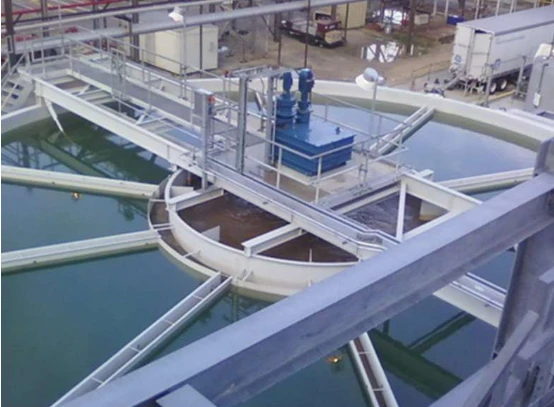
-
 Afrikaans
Afrikaans -
 Albanian
Albanian -
 Amharic
Amharic -
 Arabic
Arabic -
 Armenian
Armenian -
 Azerbaijani
Azerbaijani -
 Basque
Basque -
 Belarusian
Belarusian -
 Bengali
Bengali -
 Bosnian
Bosnian -
 Bulgarian
Bulgarian -
 Catalan
Catalan -
 Cebuano
Cebuano -
 China
China -
 China (Taiwan)
China (Taiwan) -
 Corsican
Corsican -
 Croatian
Croatian -
 Czech
Czech -
 Danish
Danish -
 Dutch
Dutch -
 English
English -
 Esperanto
Esperanto -
 Estonian
Estonian -
 Finnish
Finnish -
 French
French -
 Frisian
Frisian -
 Galician
Galician -
 Georgian
Georgian -
 German
German -
 Greek
Greek -
 Gujarati
Gujarati -
 Haitian Creole
Haitian Creole -
 hausa
hausa -
 hawaiian
hawaiian -
 Hebrew
Hebrew -
 Hindi
Hindi -
 Miao
Miao -
 Hungarian
Hungarian -
 Icelandic
Icelandic -
 igbo
igbo -
 Indonesian
Indonesian -
 irish
irish -
 Italian
Italian -
 Japanese
Japanese -
 Javanese
Javanese -
 Kannada
Kannada -
 kazakh
kazakh -
 Khmer
Khmer -
 Rwandese
Rwandese -
 Korean
Korean -
 Kurdish
Kurdish -
 Kyrgyz
Kyrgyz -
 Lao
Lao -
 Latin
Latin -
 Latvian
Latvian -
 Lithuanian
Lithuanian -
 Luxembourgish
Luxembourgish -
 Macedonian
Macedonian -
 Malgashi
Malgashi -
 Malay
Malay -
 Malayalam
Malayalam -
 Maltese
Maltese -
 Maori
Maori -
 Marathi
Marathi -
 Mongolian
Mongolian -
 Myanmar
Myanmar -
 Nepali
Nepali -
 Norwegian
Norwegian -
 Norwegian
Norwegian -
 Occitan
Occitan -
 Pashto
Pashto -
 Persian
Persian -
 Polish
Polish -
 Portuguese
Portuguese -
 Punjabi
Punjabi -
 Romanian
Romanian -
 Russian
Russian -
 Samoan
Samoan -
 Scottish Gaelic
Scottish Gaelic -
 Serbian
Serbian -
 Sesotho
Sesotho -
 Shona
Shona -
 Sindhi
Sindhi -
 Sinhala
Sinhala -
 Slovak
Slovak -
 Slovenian
Slovenian -
 Somali
Somali -
 Spanish
Spanish -
 Sundanese
Sundanese -
 Swahili
Swahili -
 Swedish
Swedish -
 Tagalog
Tagalog -
 Tajik
Tajik -
 Tamil
Tamil -
 Tatar
Tatar -
 Telugu
Telugu -
 Thai
Thai -
 Turkish
Turkish -
 Turkmen
Turkmen -
 Ukrainian
Ukrainian -
 Urdu
Urdu -
 Uighur
Uighur -
 Uzbek
Uzbek -
 Vietnamese
Vietnamese -
 Welsh
Welsh -
 Bantu
Bantu -
 Yiddish
Yiddish -
 Yoruba
Yoruba -
 Zulu
Zulu
Durable and Stylish FRP Handrail Solutions for Enhanced Safety and Aesthetics
The Importance and Benefits of FRP Handrails
In recent years, the construction and engineering industries have seen a significant shift toward the adoption of composite materials. One standout option is Fiber Reinforced Plastic (FRP), which has emerged as a popular choice for various applications, including handrails. The utilization of FRP handrails brings several benefits to both residential and commercial settings, making them an essential consideration in modern construction and design.
What is FRP?
Fiber Reinforced Plastic (FRP) is a composite material that combines a polymer matrix with fibrous materials, such as glass, carbon, or aramid fibers. This synthesis results in a lightweight, yet exceptionally strong product. FRP is known for its corrosion resistance, durability, and versatility, making it ideal for various environments, including coastal and industrial settings where traditional materials may fail over time.
Advantages of FRP Handrails
1. Corrosion Resistance One of the most significant advantages of FRP handrails is their inherent resistance to corrosion. Unlike metal handrails, which can rust and degrade when exposed to moisture and chemicals, FRP maintains its integrity under harsh conditions. This makes it perfect for marine environments, wastewater treatment facilities, and other corrosive settings.
2. Durability FRP materials are known for their long service life. They can withstand extreme weather conditions, including heavy rains, strong winds, and intense sunlight. This durability minimizes maintenance costs and replacement needs, providing a cost-effective solution over time.
3. Lightweight FRP handrails are considerably lighter than traditional metal or wood handrails. This lightness facilitates easier handling during installation, reducing labor costs and ensuring a quicker construction timeline. The lightweight nature of FRP also minimizes structural loading, making it suitable for various applications.
frp handrail

4. Versatility in Design FRP handrails come in a variety of colors, styles, and finishes, allowing for flexible design options to meet aesthetic goals. Customizable designs can enhance the visual appeal of both residential and commercial spaces. Moreover, FRP can be molded into various shapes and sizes, offering unique design opportunities that fixed materials cannot.
5. Safety Many FRP handrails come with a non-slip surface, providing an advantage in safety, especially in wet or slippery conditions. This feature is crucial for environments such as pools, docks, and industrial sites, where ensuring safety for workers and visitors is paramount.
6. Environmental Impact FRP materials can be manufactured using recycled content and are also recyclable at the end of their life cycle. This characteristic makes FRP handrails an eco-friendly choice, appealing to environmentally conscious consumers and businesses.
Applications of FRP Handrails
FRP handrails can be effectively utilized in various applications. They are commonly used in industrial settings like factories and construction sites, where safety and durability are crucial. In public infrastructure, such as bridges and walkways, FRP handrails provide necessary support while enhancing the overall structural integrity. Additionally, residential properties can benefit from the aesthetic versatility and low maintenance associated with FRP.
Conclusion
In summary, FRP handrails represent a modern solution for safety, durability, and aesthetics in construction and design. Their corrosion resistance, lightweight characteristics, and versatility in design make them an increasingly popular choice across various industries. As construction practices continue to evolve, FRP handrails stand out as a proactive measure for enhancing safety while minimizing environmental impact. Whether for a new building project or retrofitting an existing space, considering FRP handrails is a step toward embracing innovative materials that meet the demands of today’s infrastructure needs. With their multitude of benefits and applications, FRP handrails are set to play a significant role in the future of construction.









